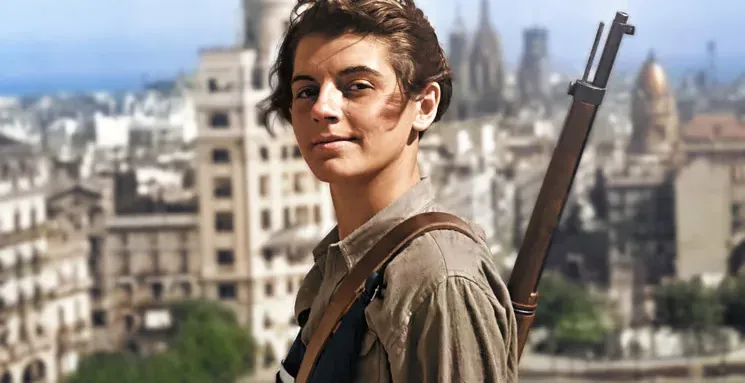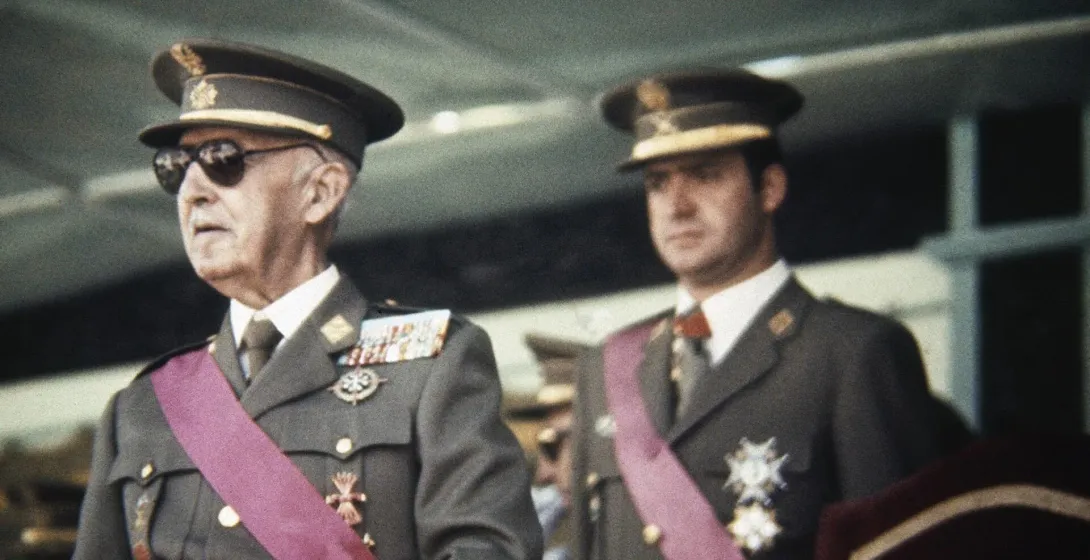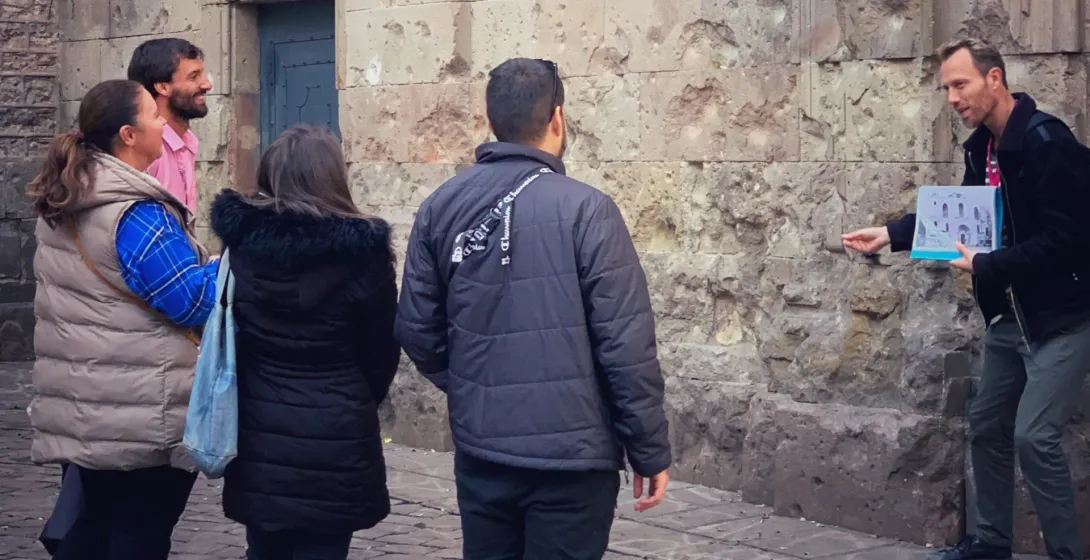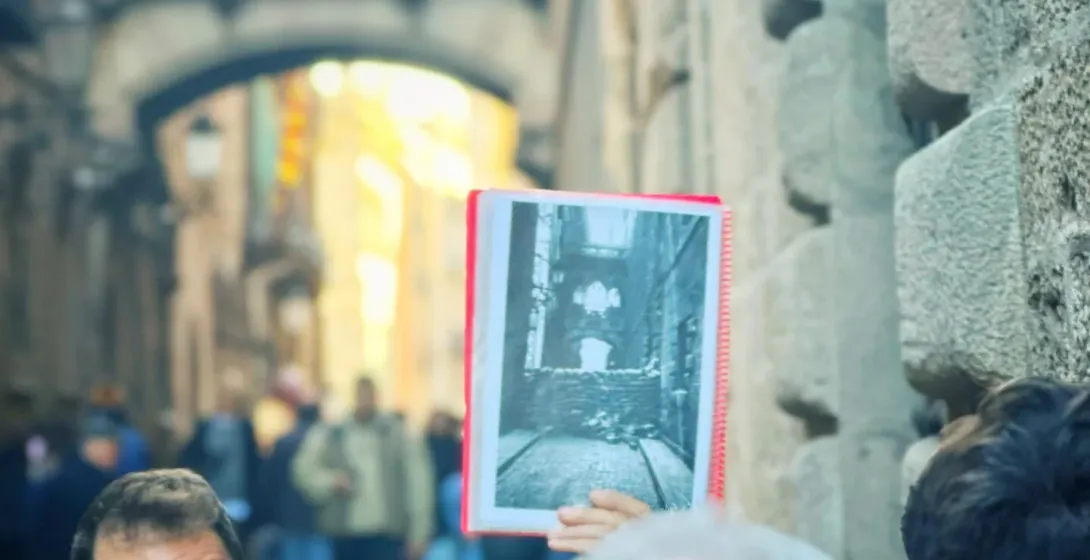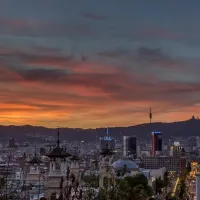The Spanish Civil War in Barcelona: A Walking Tour of the Old Town
History of the Spanish Civil War in Barcelona. We follow the 1936 uprising, rival factions, and repression through Plaça de Catalunya and the Old Town, with Orwell’s references, traces of bomb damage, and visits to La Rambla, Plaça de Sant Jaume, and Plaça de Sant Felip Neri.
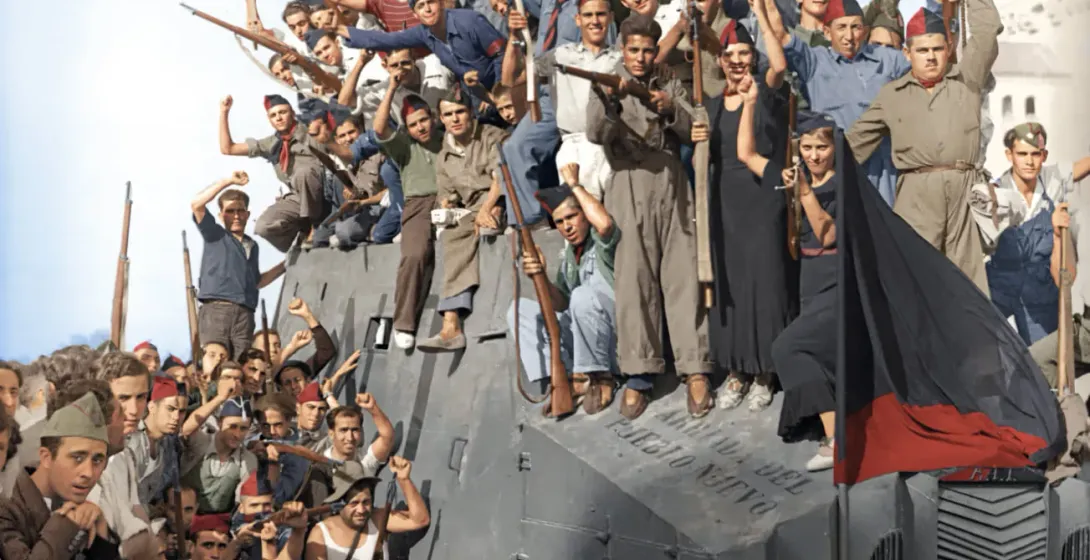
Basic Information
Total time
2h
Language
English, Spanish (check the calendar for availability)
Price
Our “Pay What You Wish” tours don’t have a fixed price — you decide how much the experience was worth. At the end of the tour, please make a fair contribution that reflects your satisfaction and appreciation for your guide’s work. Most guests give between €10 and €50 per person.
Meeting point
Plaza Catalunya, next to the Hard Rock Café, in front of Foot Locker Nearest public transport: La Rambla metro station; Pelai (FGC) metro station
Additional info
☂︎ This tour is organised by Nostos Tours guides. Look for the guide with the white umbrella.
Booking rules
Booking is obligatory. Our “Pay What You Wish” tours are meant for individual travellers and small groups. Large groups (8 or more people) cannot join these tours, as they significantly affect the experience for others and the guide. For school trips, organised tours, or groups of friends, please arrange a Private Tour. For more information or to schedule a group visit, please contact us directly.
About the tour

Standing today in the bustling Plaça de Catalunya, watching tourists from all around the world pass by, it is quite hard to imagine that this was just the place where on July 19th, 1936 the first shots were fired in what was to become the Spanish Civil War.
On one side were the Nationalists, supported by conservative elements, the military, land owners, and the Catholic Church supported by fascist Italy and Nazi Germany. On the other side were the Republicans, workers, peasants, and supporters of progressive, secular, and democratic government, along with anarchists and communists supported by the Soviet Union and international volunteers, including the famous International Brigades. It began with a failed military coup against the Spanish Republic, led by a group of nationalist under General Francisco Franco. The spiral of violence wound up quickly, marking the war by widespread violence and atrocities on both sides, with the bombing of Guernica in 1937 by German and Italian air forces being one of the most notorious incidents. The war ended in 1939. Franco entered the capital and declared victory. His dictatorship lasted until 1975, the year of his death. Hundreds of thousands of Spaniards fled to refugee camps in southern France. Those associated with the losing Republicans who stayed were persecuted and murdered.
The war was not only a pivotal event in Spanish history, dividing the country both geographically and ideologically, but had significant international implications, influencing global politics in the lead-up to World War II. It also mobilized many artists and intellectuals to take up arms. Among the most notable artistic responses were George Orwell’s memoir Homage to Catalonia (1938) and Pablo Picasso’s painting Guernica (1937). The echoes of the war are also heard in The Clash’s song “Spanish Bomb” (1979).
Join our tour and learn why Barcelona was once known as the most explosive and revolutionary city in Europe! Get to know how and why the war began, who the fighting groups were and how was to live under Franco’s dictatorship. Our guides will explain how both the war and the dictatorship finally ended and make you understand the important role of the women before, during and after the war. Join us to understand the war that had grave implications not only on Spain, but the world at large!
Highlights
- 1
Plaça de Catalunya
The site where the first shots of the Civil War were fired in Barcelona in 1936.
- 2
The Spanish Civil War
Understand the conflict between Republicans and Nationalists that deeply divided Spain.
- 3
Franco's Dictatorship
Learn about life in Spain under the repressive 40-year regime that followed the Civil War.
- 4
George Orwell's Barcelona
Visit locations from the author's famous memoir about the war, 'Homage to Catalonia'.
- 5
Old Town Battlegrounds
Explore the narrow streets of the Old Town which became the main urban battlefields.
- 6
Bombing Remnants
See the lasting scars on buildings from the wartime aerial bombings of the city.
- 7
Women in the War
Discover the crucial and often overlooked role women played throughout the conflict and its aftermath.
Map
Plaza Catalunya, next to the Hard Rock Café, in front of Foot Locker Nearest public transport: La Rambla metro station; Pelai (FGC) metro station

